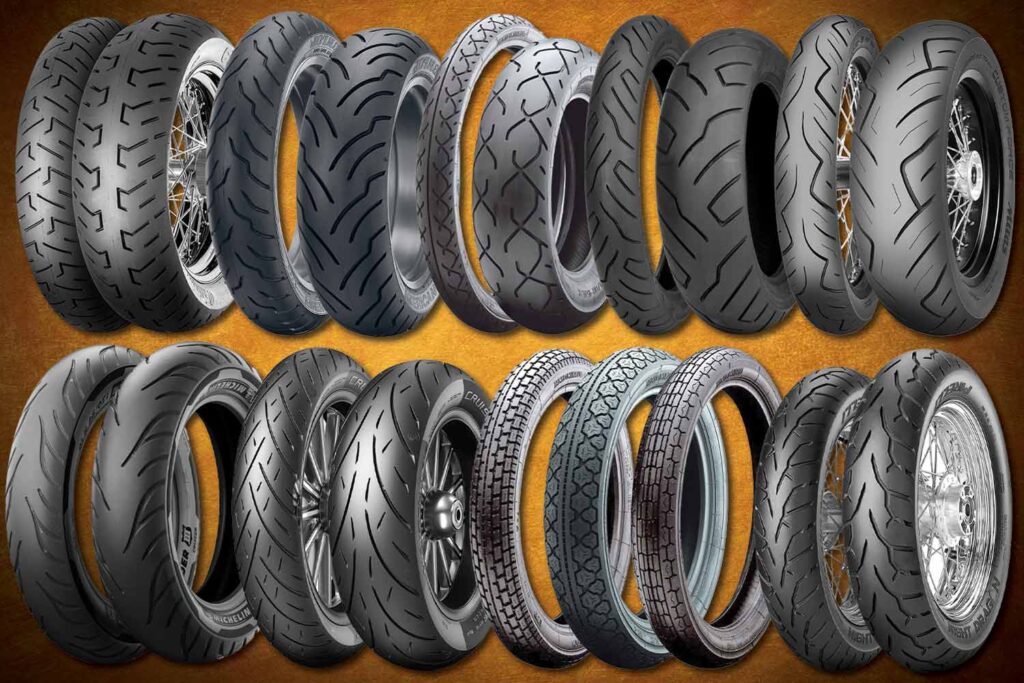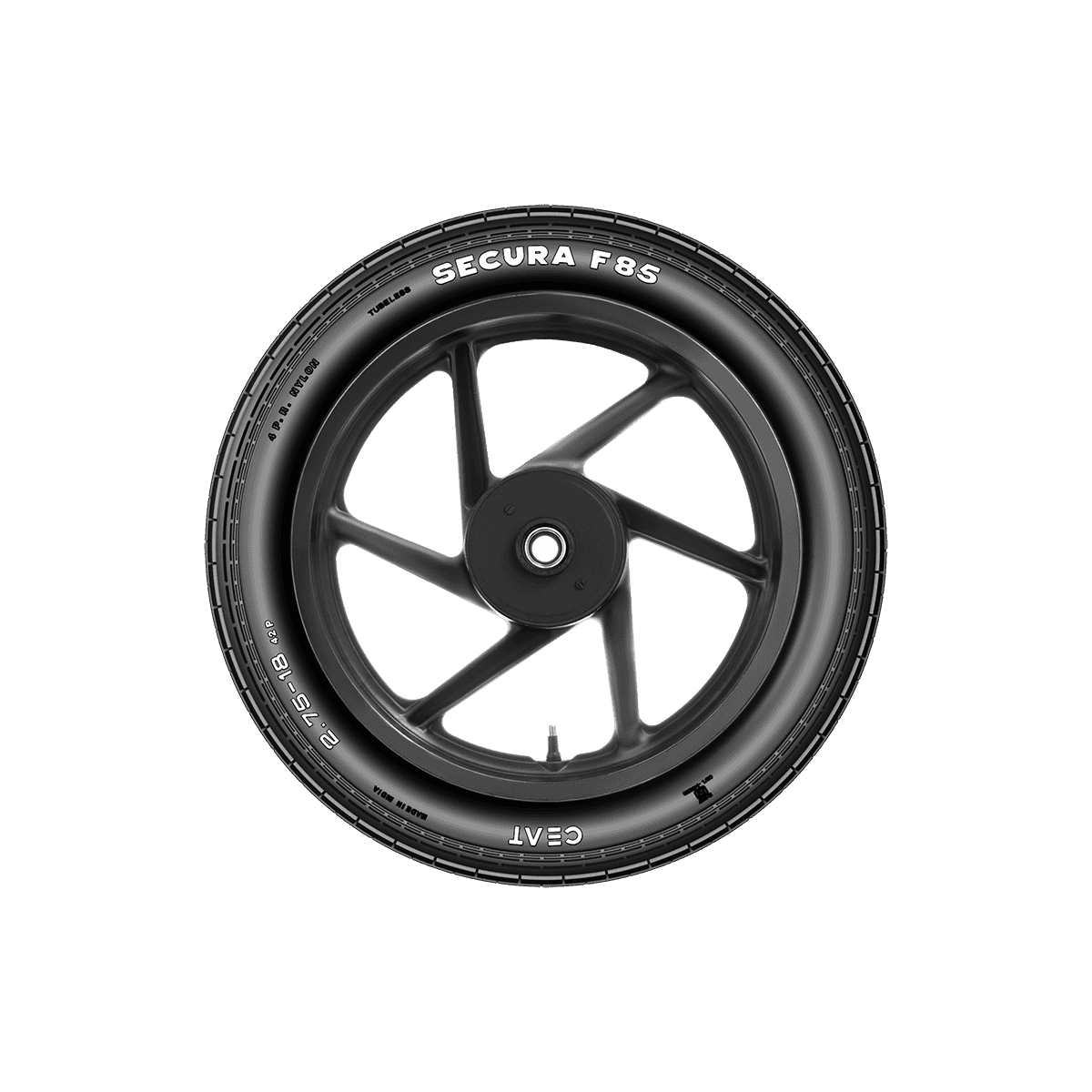All About the Necessary Motorcycle Tire Guide for Optimal Bike Maintenance and Efficiency
The Vital Motorcycle Tyre Overview functions as an essential resource for cyclists seeking to improve their bike's efficiency and safety and security. motorcycle tyre guide. It offers insights into various tire kinds and specs that affect handling and longevity. In addition, comprehending correct maintenance practices can greatly prolong tyre life. Numerous riders overlook critical aspects that impact their riding experience. Exploring these aspects can cause educated decisions that ultimately improve both safety and security and enjoyment on the roadway
Comprehending Bike Tire Types
When choosing motorcycle tires, understanding the numerous kinds offered is crucial for peak performance and security. Motorcyclists encounter different tire categories, each created for particular riding designs and conditions. Sport tires highlight grasp and responsiveness, making them appropriate for high-performance bikes and track usage. Touring tyres, on the various other hand, concentrate on sturdiness and convenience, perfect for long-distance rides. Off-road tyres include hostile tread patterns, offering grip on unequal surface areas, while dual-sport tyres supply convenience for cyclists who move in between on-road and off-road conditions.Additionally, cruiser tyres are designed for security and a smooth trip, catering to the unique requirements of cruisers and visiting bikes. Recognizing these groups allows cyclists to choose tires that straighten with their riding routines and ecological conditions, inevitably improving both safety and efficiency. Each type plays an important role in making sure a superior riding experience customized to the individual motorcyclist's needs.
Trick Tire Specs Explained
Choosing the ideal bike tires entails greater than just recognizing the numerous types; it likewise calls for knowledge with crucial specs that affect performance and safety. Secret specs consist of tyre dimension, which is typically expressed as a series of numbers showing width, aspect ratio, and edge diameter. This code is essential for ensuring compatibility with the motorcycle.Another crucial requirements is the load index, indicating the optimum weight a tyre can support. The rate score signifies the optimal speed a tire can securely handle, critical for performance enthusiasts.Additionally, walk pattern and rubber substance influence hold, security, and use attributes. Tires with a softer substance have a tendency to provide far better grip yet wear faster, while tougher substances last much longer however may sacrifice grip. Comprehending these requirements allows motorcyclists to make enlightened choices, enhancing both their security and riding experience.
How to Choose the Right Tyres for Your Bike
How can a rider assurance they pick the appropriate tires for their bike? Choosing the ideal tyres involves comprehending the particular requirements based upon riding terrain, weather condition, and design problems. Bikers ought to first speak with the motorbike's handbook to determine recommended tyre dimensions and specifications.Next, they must review the kind of riding they prepare to do-- whether it's travelling, exploring, or off-road. Each group has distinctive tire designs customized for top performance.Additionally, cyclists need to analyze step patterns; much deeper footsteps use much better hold in damp problems, while shallower footsteps enhance stability on completely dry surfaces.Lastly, it is necessary to check out the tyre's building and product, as these elements influence longevity and handling (motorcycle tyre guide). By reviewing these aspects carefully, a motorcyclist can with confidence select tires that enhance safety and security, efficiency, and general riding experience
The Relevance of Tire Stress and Maintenance
Tire pressure is a significant element of bike maintenance that directly influences safety and performance. Keeping the correct tyre pressure assurances excellent call with the road, enhancing hold and security throughout adventures. Under-inflated tires can cause raised rolling resistance, causing inadequate gas performance and excessive endure the tires. On the other hand, over-inflated tires may create a severe ride and reduce traction, specifically in damp conditions.Regularly monitoring tire stress, preferably prior to each adventure, is essential to keeping the motorbike's general efficiency. Riders must refer to the supplier's requirements for the recommended stress levels. Additionally, monitoring tyre condition and readjusting pressure according to load and riding problems is vital for security. Appropriate tire upkeep adds to extended tire life expectancy, better handling, and boosted stopping efficiency. Inevitably, regular attention to tyre stress and upkeep is vital for guaranteeing a risk-free and pleasurable riding experience.

Identifying Indications of Tire Put On and Damage
Identifying indicators of tyre wear and damages is crucial for preserving motorbike safety and security and performance. Secret indications include examining step depth and performing a complete visual inspection for any noticeable damages. Attending to these aspects quickly can avoid further difficulties when traveling.
Walk Deepness Evaluation
As riders take to the roadways, the value of assessing walk deepness can not be overemphasized, since put on or damaged tires can significantly affect safety and performance. Tread deepness directly affects grip, stopping range, and cornering stability. To analyze tread deepness, motorcyclists should use a step depth gauge, measuring the grooves at various points throughout the tyre. A deepness of 2mm or much less indicates considerable wear and requires instant replacement. Furthermore, bikers can employ the "cent examination" by inserting a coin into the tread; if the top of Lincoln's head shows up, the tire is as well used. Normal checks assure peak hold on varied roadway conditions, promoting a more secure riding experience while boosting the general handling of the bike.
Aesthetic Damage Assessment
Examining motorbike tyres for visual damage is essential for preserving safety and security when driving. Cyclists must on a regular basis take a look at tires for signs of wear such as fractures, protrudes, or leaks. Irregular wear patterns may show positioning issues or inappropriate rising cost of living, resulting in jeopardized performance. In addition, inspecting for international things installed in the walk can protect against possible blowouts. Riders need to pay close focus to the sidewalls, as any type of cuts or abrasions can deteriorate the tyre's structure. Making certain that the step is without excessive wear is vital for optimal grip. Normal visual assessments not just enhance safety and security yet also extend the life of the tyres, making certain a smoother and more reliable riding experience. Prompt discovery of damage can avoid costly repair work and accidents.
Seasonal Tyre Considerations for Various Riding Conditions
When considering motorcycle tyres, seasonal problems play a crucial role in efficiency. In wet weather condition, tires designed for enhanced hold and water variation come to be important for safety and security. Additionally, winter months riding needs certain tyre features to assure peak grip on cool, potentially unwelcoming surfaces.

Damp Weather Performance
Damp climate condition present one-of-a-kind challenges for motorcyclists, making the option of tyres vital for safety and performance. Tyres created for damp weather why not look here condition typically include much deeper footsteps and specialized rubber compounds that boost grip on slippery surfaces. These tires are crafted to direct water away, reducing the danger of aquaplaning and improving stability during rain. Cyclists ought to think about tyres with a well balanced layout, using both grip and durability in wet problems. Additionally, maintaining appropriate tyre pressure is essential, as under-inflated sites tyres can endanger efficiency. Regular evaluations for wear and damages are necessary to assure peak function when faced with rain-soaked roadways. Selecting ideal wet-weather tires eventually adds to a more secure and extra enjoyable riding experience.
Winter Season Tire Needs
Riding in winter season problems postures distinct obstacles that necessitate particular tyre demands to assure security and performance. Wintertime motorcycle tires are developed with deeper treads and softer rubber compounds, offering boosted grip on slippery and cool surface areas. This is crucial for keeping traction on ice, snow, and damp roadways. Additionally, wintertime tires often include a distinct walk pattern that aids network water away, lowering the risk of aquaplaning. Motorcyclists should additionally consider the tire's temperature strength, as performance can lessen in severe cold. It is very important to on a regular basis check tyre stress, as it can go down significantly in reduced temperatures. By choosing the ideal winter months tires, motorcyclists can navigate severe conditions with greater self-confidence and stability, guaranteeing a safer riding experience.
Tips for Correct Tire Storage Space and Durability
Correct tyre storage is vital for preserving their durability and performance with time, as ignoring this aspect can lead to early wear and tear. To ensure perfect storage space, it is important to keep tires in an awesome, dry setting away from direct sunlight and sources of warmth, such as radiators or furnaces. Excessive warm can trigger rubber substances to break down, endangering the tire's integrity.Additionally, tires should be kept upright or stacked horizontally, depending upon their type. If stacked, it is recommended to turn them regularly to avoid flat places. Proper rising cost of living is likewise important; tyres ought to be pumped up to the producer's advised pressure to avoid deformation.Lastly, it is helpful to cover tires with a protective material to shield them from dirt and contaminants. Adhering to these suggestions will aid prolong the life of motorbike tyres, ensuring they continue to be reliable and safe for use when the riding season returns to.
Frequently Asked Concerns
Exactly how Commonly Should I Replace My Bike Tyres?

Can I Mix Different Tire Brands on My Motorcycle?
Mixing different tyre brands on a bike is normally not recommended. Variants in step patterns, rubber compounds, and efficiency attributes can cause uncertain handling and jeopardized safety and security, potentially increasing the risk of accidents.
What Is the Lifespan of a Bike Tire?
The lifespan of a bike tire typically varies from 5,000 to 15,000 miles, affected by aspects such as riding tire, style, and surface maintenance. Normal evaluations can assist ensure peak efficiency and security throughout their usage.
Exactly how Do I Get Rid Of Old Motorbike Tyres?
When disposing of old bike tyres, they should be taken to designated recycling. Many regional waste administration services also supply tire disposal programs, making certain eco-friendly handling and conformity with local policies pertaining to tire waste.
Exist Any Tyre Warranties Offered for Motorbikes?
Lots of motorbike tire producers offer guarantees that cover flaws in product and craftsmanship. The specifics vary by brand and version, so it's crucial for riders to examine private service warranty terms before purchasing new tires. Off-road tyres include aggressive tread patterns, providing grip on uneven surface areas, while dual-sport tires offer adaptability for riders who change between off-road and on-road conditions.Additionally, cruiser tyres are made for stability and a smooth trip, providing to the distinct demands of cruisers and exploring bikes. Each category has distinct tyre styles tailored for height performance.Additionally, motorcyclists must analyze tread patterns; much deeper footsteps supply better grasp in wet problems, while shallower treads enhance stability on completely dry surfaces.Lastly, it is necessary to examine the tire's construction and product, as these aspects affect resilience and handling. Correct tyre maintenance contributes to prolonged tire life expectancy, far better handling, and enhanced braking efficiency. Correct inflation is likewise essential; tyres should be blown up to the supplier's advised stress to avoid deformation.Lastly, it is valuable to cover tires with a safety material to protect them from dust and contaminants. The life-span of a motorbike tyre generally ranges from 5,000 to 15,000 miles, influenced by variables such as riding surface, style, and tyre maintenance.